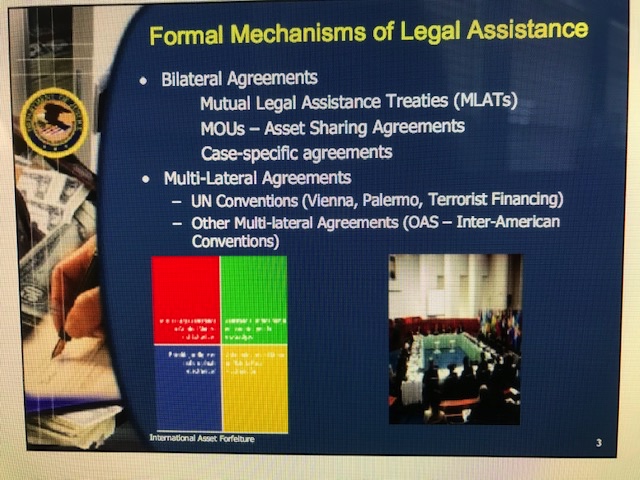The second hearing in the Senate where Inspector General Horowitz delivered more testimony to the Senate Homeland Security and Governmental Affairs Committee was quite chilling and revealing.
There was a particular exchange between Senator Josh Hawley (R-Mo.) and Horowitz that explains the bias or perhaps even the plotting.
Sen. Josh Hawley, R-Mo., was blunt in trying to get to the bottom of what happened during Wednesday’s Senate Homeland Security and Governmental Affairs Committee hearing.
“Were they just all incompetent?” he asked. Hawley then noted that due to the complexities involved, “it doesn’t sound like they’re very stupid to me.”
Hawley ultimately asked why the members of the FBI would commit such failures to mislead a court multiple times.
“That was precisely the concern we had,” Horowitz said. The inspector general made clear that he did not reach any conclusions regarding intent, but he did not necessarily accept the reasons people gave him during his investigation.
“There are so many errors, we couldn’t reach a conclusion or make a determination on what motivated those failures other than we did not credit what we lay out here were the explanations we got,” Horowitz said.
This echoed what Horowitz said in his opening statement, where he made clear that “although we did not find documentary or testimonial evidence of intentional misconduct, we also did not receive satisfactory explanations for the errors or the missing information and the failures that occurred.”
Horowitz previously appeared before the Senate Judiciary Committee in the aftermath of his report on the subject, but Wednesday’s hearing before the Senate homeland security panel comes a day after the Foreign Intelligence Surveillance Court (FISC) sharply criticized the FBI in a rare public order that referenced his findings.
Horowitz said that both Justice Department attorneys and the Foreign Intelligence Surveillance Court “should have been given complete and accurate information,” adding, “that did not occur and as a result, the surveillance of Carter Page continued even as the FBI gathered evidence and information that weakened the assessment of probable cause and made the FISA applications less accurate.”
So, the Democrats along with the media prepackaged the headlines prior to the Horowitz testimony that the IG report found NO bias. We are now getting more concise and factual information that says otherwise. Seems those on the top floor of the J. Edgar Hoover building opened some old history books on the former Director of the FBI and used several of Hoover’s tactics for all things Crossfire Hurricane and the 4 FISA warrants.
 The IG report is teeming with deceit and clandestine maneuvers at the hands of the SSA’s (Special Agents) on the top floor and not those of 7 levels down from the Director level as Comey and McCabe have declared.
The IG report is teeming with deceit and clandestine maneuvers at the hands of the SSA’s (Special Agents) on the top floor and not those of 7 levels down from the Director level as Comey and McCabe have declared.
The first FISA application: “contained seven significant inaccuracies and omissions.”. None of these were corrected with an addendum or with the 3 renewals. Contrary to Comey’s constant testimony, the dossier played the largest role in the warrant application and the FBI knew that Carter Page worked as an agent for the CIA to collect and share information on his Russian interactions, yet that was stripped out of the hundreds of pages in the warrant applications. By the way, both the FBI and the CIA as a matter of practice use civilian informants and even top leaders of global corporations to gather intelligence during foreign travels and interactions.
Now, where is the outrage of the pesky now very loyal and dedicated pro-Constitutional Democrats and where is the media on all this? In fact, with the top judge, Rosemary Collyer at the FISA court issuing a demand letter after the IG report and testimony to the FBI, what will the all the clean up measures include and will there be legal consequences for those who lied, cheated and deceived the court? Beware, much of our media, TV and print operates with wild abandon by applying propaganda….the Kremlin would be proud.






 The members of Usman Khan’s Al Qaeda-inspired gang who plotted to blow up the London Stock Exchange and kill Boris Johnson. From left to right: Mohammed Moksudur Chowdhury, Mohammed Shahjahan, Shah Mohammed Rahman. Middle row: Mohibur Rahman, Gurukanth Desai, Abdul Malik Miah. Bottom row: Nazam Hussain, Usman Khan, Omar Sharif Latif
The members of Usman Khan’s Al Qaeda-inspired gang who plotted to blow up the London Stock Exchange and kill Boris Johnson. From left to right: Mohammed Moksudur Chowdhury, Mohammed Shahjahan, Shah Mohammed Rahman. Middle row: Mohibur Rahman, Gurukanth Desai, Abdul Malik Miah. Bottom row: Nazam Hussain, Usman Khan, Omar Sharif Latif